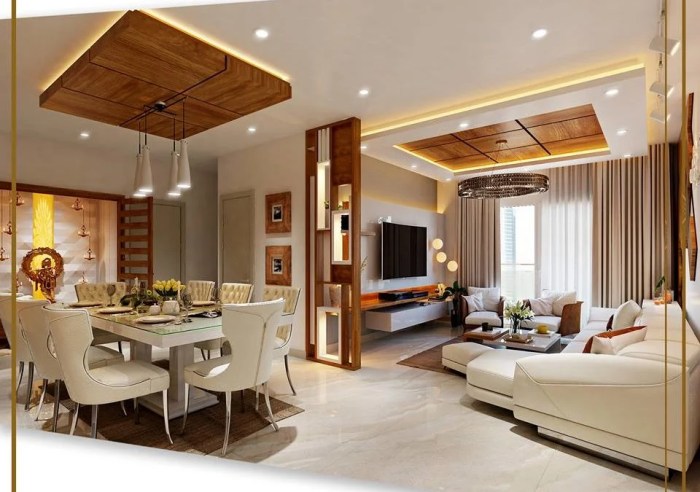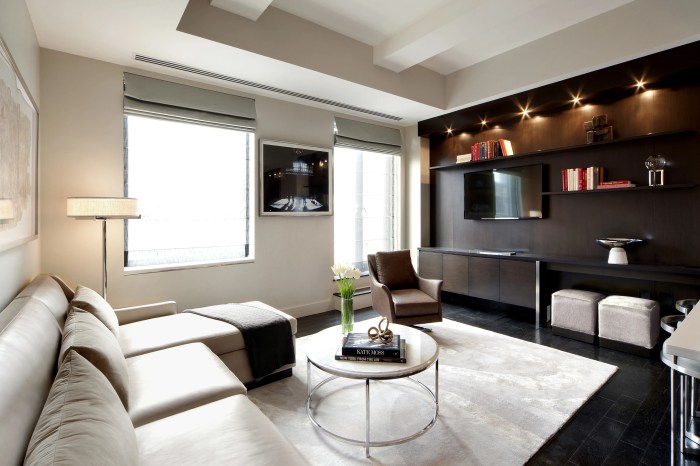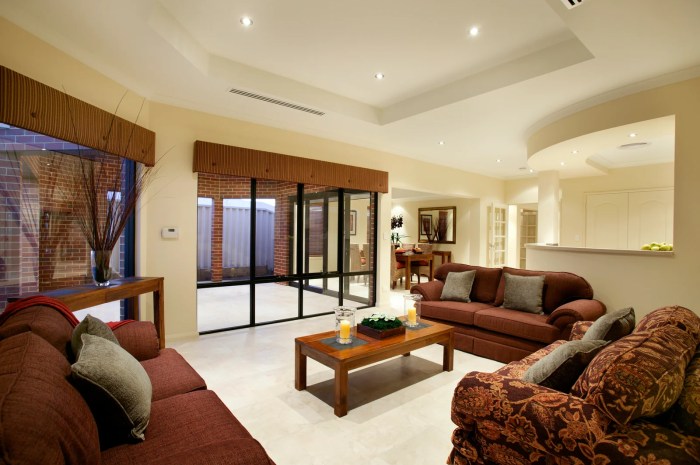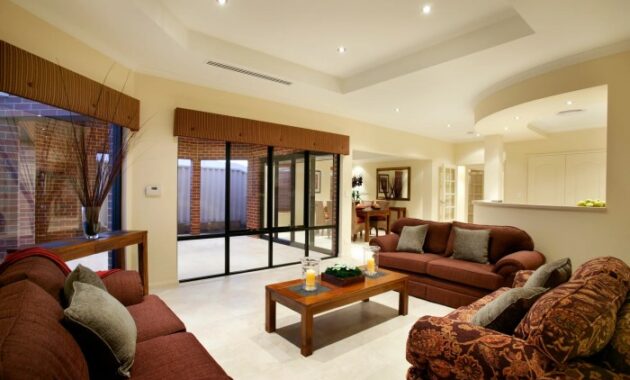Best design house interior is not just about aesthetics; it’s about creating a space that reflects your personality, enhances functionality, and fosters a sense of well-being. From choosing the right color palette and materials to incorporating smart home technologies, every element plays a crucial role in transforming your house into a home you truly love.
This guide explores the multifaceted world of interior design, delving into key aspects like space planning, lighting, and sustainability. We’ll also discuss the benefits of working with a professional interior designer and how to infuse your personal style into every corner of your home.
Defining “Best” Design House Interior

Defining the “best” design house interior is subjective and depends on individual preferences and priorities. What constitutes a “best” design can vary widely based on factors like personal style, lifestyle, and budget.
Factors Contributing to a “Best” Design
The “best” design house interior is a harmonious blend of functionality, aesthetics, and sustainability. These factors work together to create a space that is both beautiful and practical.
- Functionality:A well-designed interior should be practical and efficient, maximizing space and flow while accommodating the needs of its occupants. This includes features like ample storage, well-planned traffic patterns, and ergonomic furniture.
- Aesthetics:The visual appeal of a space is crucial. This involves selecting colors, textures, materials, and furniture that create a cohesive and visually pleasing environment. Aesthetics can be influenced by personal style, cultural preferences, and current design trends.
- Sustainability:Incorporating sustainable practices into interior design is becoming increasingly important. This includes using eco-friendly materials, minimizing waste, and promoting energy efficiency. Sustainable design choices contribute to a healthier environment and a more responsible approach to living.
Perspectives on “Best” Design
Different individuals and design professionals may have varying perspectives on what constitutes a “best” design house interior. Some prioritize functionality, seeking spaces that are efficient and practical, while others prioritize aesthetics, seeking visually stunning and inspiring environments.
- Functionality-focused:These individuals prioritize practicality and efficiency. They may seek spaces with ample storage, well-planned traffic patterns, and ergonomic furniture. A minimalist approach with clean lines and a focus on functionality is often preferred.
- Aesthetics-focused:These individuals prioritize visual appeal and create spaces that are visually stunning and inspiring. They may incorporate bold colors, intricate patterns, and luxurious materials to create a dramatic and impactful environment.
- Sustainability-focused:These individuals prioritize environmentally responsible practices. They may choose sustainable materials, minimize waste, and promote energy efficiency in their design choices. This approach can involve using recycled materials, incorporating natural lighting, and selecting energy-efficient appliances.
Key Elements of High-Quality Interior Design, Best design house interior
High-quality interior design is characterized by several key elements that contribute to a well-designed and functional space. These elements include:
- Thoughtful Planning:A well-designed interior is the result of careful planning and consideration of the space’s purpose, the needs of its occupants, and the overall aesthetic vision. This involves creating a detailed floor plan, selecting appropriate materials, and considering the flow of traffic within the space.
- Quality Materials:High-quality interior design utilizes durable and aesthetically pleasing materials. This can include natural materials like wood, stone, and leather, as well as high-quality synthetic materials that are designed to withstand wear and tear. Choosing materials that are both beautiful and functional is essential for creating a long-lasting and enjoyable space.
Creating the best design for a house interior requires a deep understanding of your personal style and the desired atmosphere. For those seeking a relaxed and breezy vibe, beach house style interior design offers a perfect blend of natural elements, light colors, and comfortable textures.
No matter your chosen aesthetic, a well-designed interior can transform your house into a haven that reflects your unique personality.
- Attention to Detail:A well-designed interior is characterized by attention to detail. This includes carefully selecting finishes, hardware, and accessories that complement the overall design aesthetic and enhance the functionality of the space. Attention to detail can elevate the overall look and feel of a room, creating a sense of refinement and sophistication.
- Professional Expertise:Engaging a professional interior designer can bring significant benefits to a design project. Designers have the expertise to create a cohesive and functional space that meets the specific needs and preferences of their clients. They can provide valuable insights into materials, finishes, and furniture selection, ensuring that the design is both aesthetically pleasing and practical.
Design Styles and Trends

The beauty of a house interior lies in its design. From the classic to the modern, different styles cater to diverse tastes and lifestyles. Understanding these styles and their trends helps homeowners create a space that reflects their personality and meets their needs.
Popular Design Styles
This section delves into popular design styles and their key characteristics. Understanding these styles can guide homeowners in selecting the best design for their homes.
- Modern: Known for its clean lines, minimalist approach, and use of neutral colors, modern design emphasizes functionality and simplicity. It often incorporates natural materials like wood and stone, along with sleek furniture and geometric shapes. Examples include the iconic Eames Lounge Chair and the Barcelona Chair.
- Minimalist: Minimalism takes the modern approach a step further, focusing on reducing clutter and maximizing open space. It prioritizes functionality over ornamentation, using a limited color palette and simple furniture. Minimalist interiors often feature neutral colors like white, gray, and black, with pops of color used strategically.
The absence of unnecessary items creates a sense of peace and tranquility.
- Traditional: This style embraces timeless elegance and classic design elements. Traditional interiors often feature ornate furniture, rich fabrics, and warm color palettes. Think elaborate chandeliers, patterned rugs, and detailed moldings. This style exudes sophistication and a sense of history.
- Farmhouse: Farmhouse style brings a rustic charm to interior design. It emphasizes natural materials like wood and stone, incorporating vintage elements like distressed furniture and exposed beams. Warm color palettes with touches of green and blue create a welcoming and cozy atmosphere.
The farmhouse aesthetic is often characterized by a focus on comfort and functionality.
Current Interior Design Trends
Current trends in interior design are constantly evolving, influenced by changing lifestyles, technology, and societal values. These trends shape the “best” design house interiors, offering fresh perspectives and innovative approaches.
- Biophilic Design: This trend focuses on integrating nature into interior spaces. Incorporating natural elements like plants, wood, and natural light creates a sense of well-being and connection to the outdoors. This approach is gaining popularity as people seek to bring the calming effects of nature into their homes.
- Sustainable Design: With growing awareness of environmental issues, sustainable design is becoming increasingly important. This trend involves using eco-friendly materials, minimizing waste, and prioritizing energy efficiency. Recycled materials, renewable energy sources, and locally sourced products are common elements in sustainable design.
- Smart Home Technology: The integration of technology into home design is transforming how we live. Smart home features like automated lighting, temperature control, and voice-activated devices are enhancing convenience and comfort. These technologies are not only making homes more efficient but also more responsive to individual needs.
- Multifunctional Spaces: In response to changing lifestyles and smaller living spaces, multifunctional design is gaining popularity. This approach involves creating spaces that serve multiple purposes, such as a home office that doubles as a guest room or a living room that can transform into a dining area.
Space Planning and Functionality

Effective space planning is the backbone of a well-designed home interior. It’s about maximizing functionality and aesthetics, ensuring that every square inch serves a purpose and contributes to the overall harmony of the space.
Space Planning Techniques
Effective space planning goes beyond simply arranging furniture; it involves considering the flow of movement, natural light, and the overall functionality of each area. Here are some techniques to maximize functionality and aesthetics:
- Open Floor Plans:Open floor plans create a sense of spaciousness and allow for seamless flow between different areas. They are especially effective in smaller homes, where they can visually expand the space.
- Multi-Purpose Furniture:Utilize furniture that serves multiple functions, such as a sofa bed, a coffee table with storage, or a dining table that can double as a workspace. This maximizes space efficiency and minimizes clutter.
- Vertical Storage:Utilize vertical space to the fullest by incorporating shelves, cabinets, and storage solutions that reach up to the ceiling. This maximizes storage capacity while keeping floors clear.
- Strategic Lighting:Proper lighting can significantly impact the perceived size and ambiance of a space. Use a combination of natural light and artificial lighting to create a balanced and inviting atmosphere.
- Color and Pattern:Lighter colors and simple patterns can make a space feel larger, while darker colors and bold patterns can create a sense of intimacy.
Living Room Layout
Here’s an example of a living room layout that optimizes space utilization and flow:
- Focal Point:Place the sofa facing a fireplace, a large window, or a statement piece of artwork to create a natural focal point and draw the eye.
- Seating Arrangement:Arrange seating in a conversational layout, with chairs or ottomans placed at an angle to encourage interaction.
- Coffee Table:Choose a coffee table that is proportional to the size of the sofa and allows for comfortable legroom.
- Storage:Incorporate storage solutions such as shelves, cabinets, or a media console to keep clutter at bay.
- Lighting:Use a combination of ambient, task, and accent lighting to create a warm and inviting atmosphere.
Home Office Space
Creating a functional and inviting home office space is essential for productivity and comfort. Here are some tips:
- Dedicated Space:Designate a dedicated space for your home office, even if it’s a small corner of a room. This helps create a clear separation between work and personal life.
- Ergonomics:Invest in an ergonomic chair, desk, and monitor to promote good posture and minimize strain.
- Storage Solutions:Keep your workspace organized with shelves, drawers, and file cabinets.
- Natural Light:Position your desk near a window to maximize natural light, which can boost mood and focus.
- Personal Touches:Add personal touches such as plants, artwork, or a comfortable rug to make your home office feel more inviting.
Final Summary
Creating a best design house interior is a journey that blends creativity, functionality, and personal expression. By understanding the principles of design, exploring different styles, and embracing the power of technology, you can transform your home into a sanctuary that reflects your unique taste and fulfills your lifestyle needs.
Remember, your home should be a place where you feel inspired, comfortable, and truly at peace.
Frequently Asked Questions: Best Design House Interior
What are the most popular interior design styles?
Popular styles include modern, minimalist, traditional, farmhouse, industrial, and eclectic, each with its own unique characteristics and aesthetic appeal.
How can I make my home more sustainable?
Choose eco-friendly materials, incorporate energy-efficient appliances, utilize natural light, and implement water-saving fixtures.
What are some smart home technologies for interior design?
Smart lighting, voice-activated assistants, automated thermostats, and security systems are some examples of technologies that enhance comfort and convenience.
How do I know if I need a professional interior designer?
If you’re unsure about design choices, want expert guidance on space planning, or desire a cohesive and stylish result, a professional designer can be invaluable.

